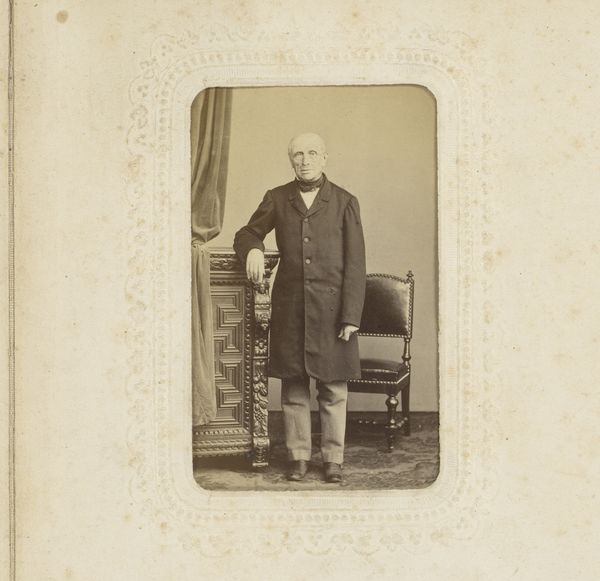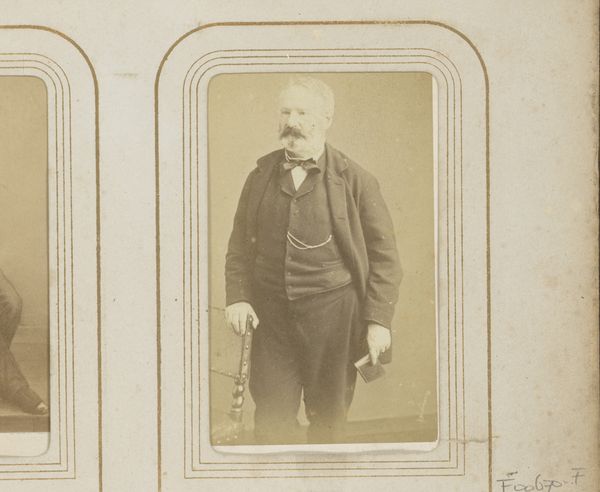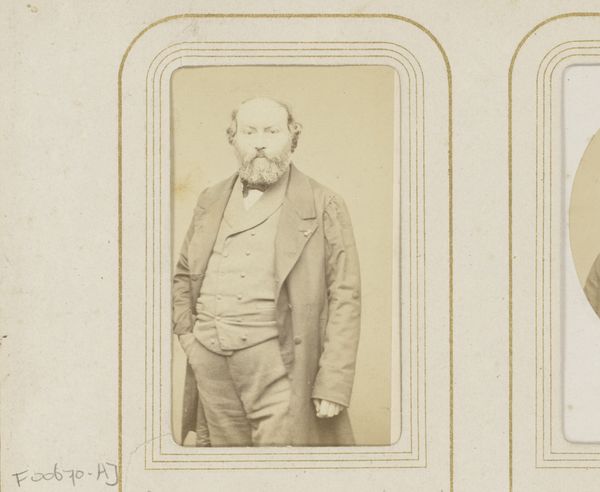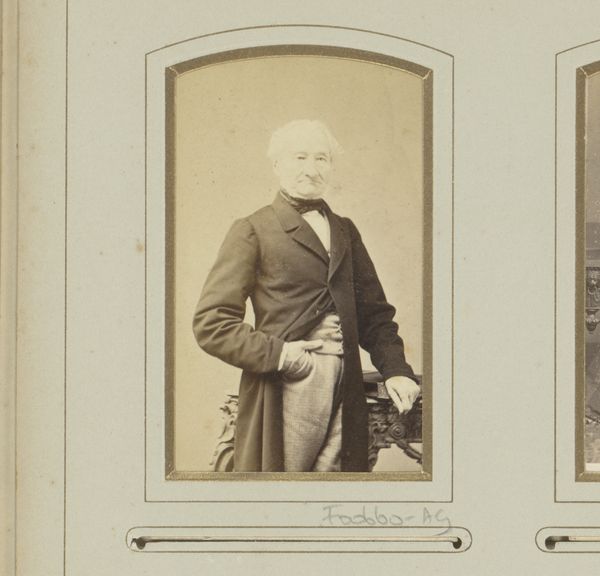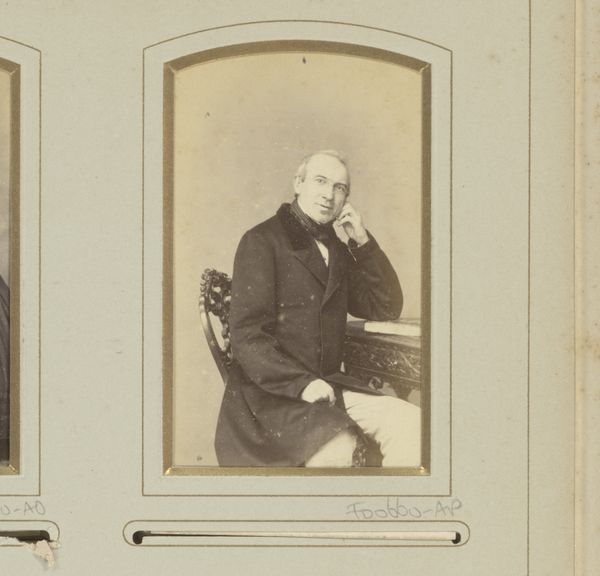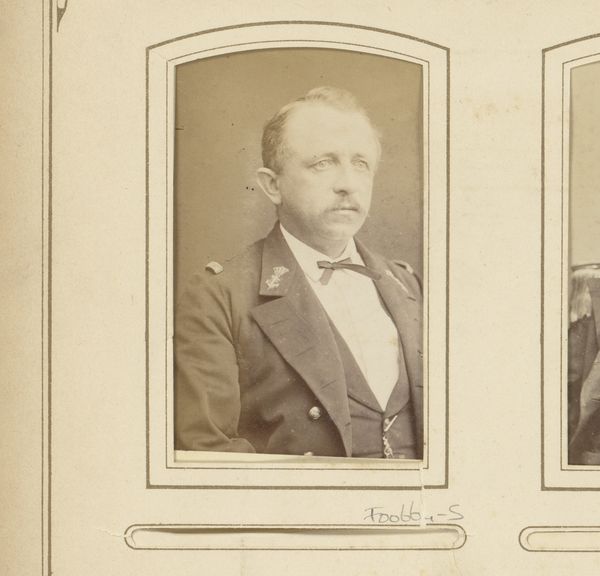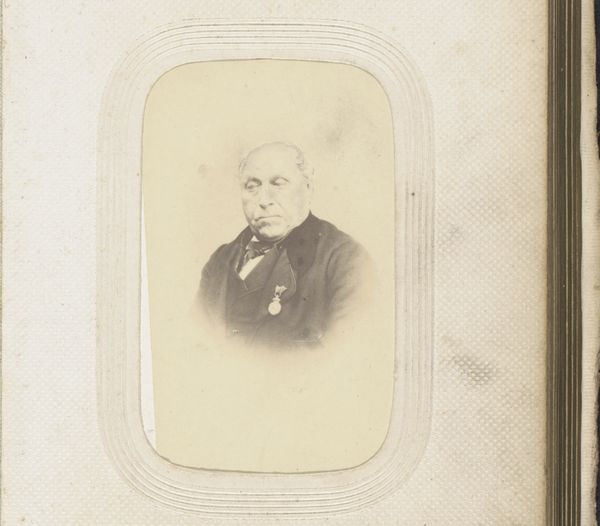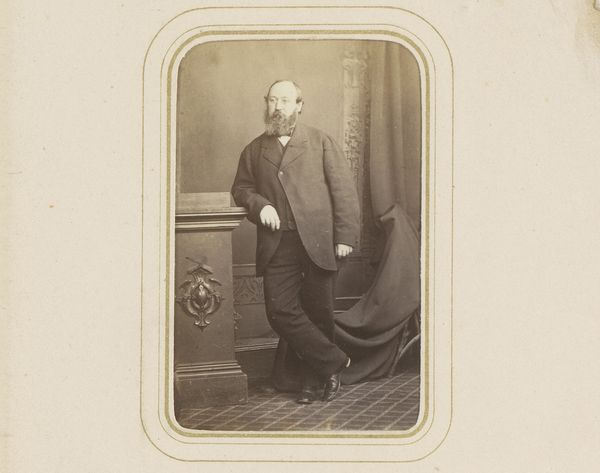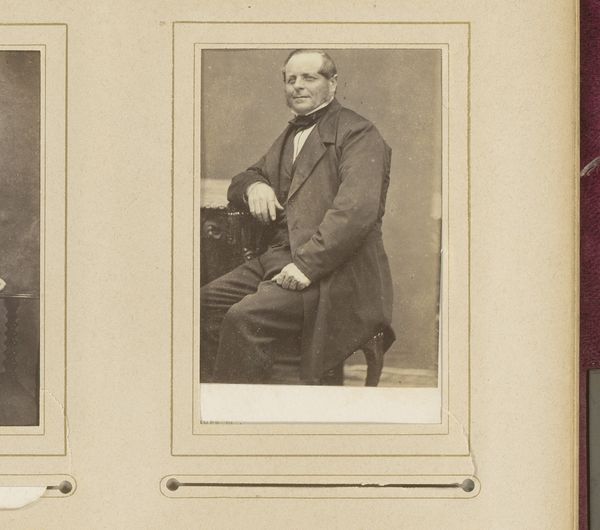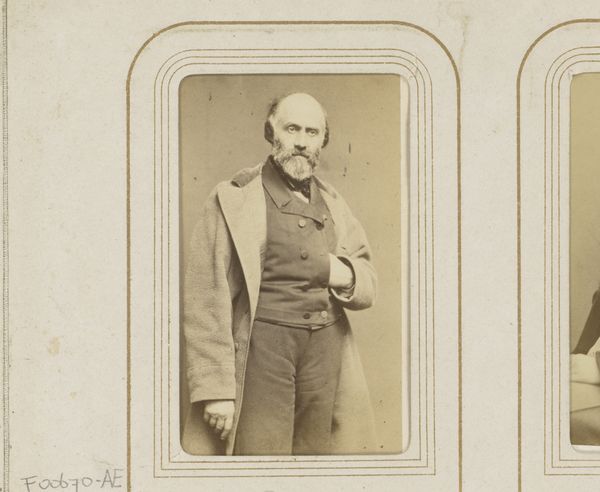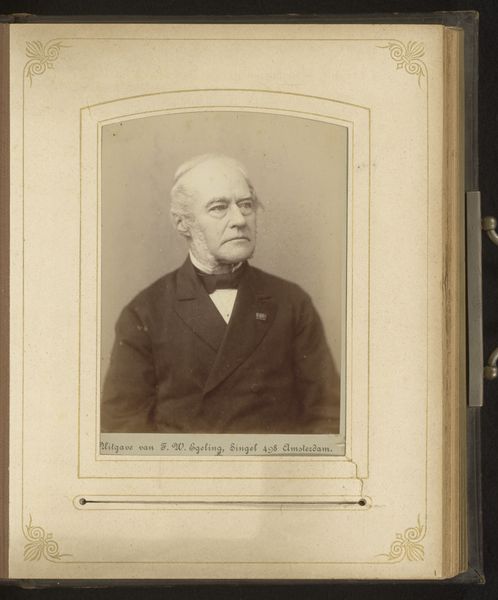
daguerreotype, photography
#
portrait
#
16_19th-century
#
daguerreotype
#
photography
#
historical photography
#
19th century
#
realism
Dimensions: height 84 mm, width 51 mm
Copyright: Rijks Museum: Open Domain
Curator: Let’s take a moment to look at this daguerreotype, a portrait of Pierre-Antoine Berryer by André-Adolphe-Eugène Disdéri, created sometime between 1855 and 1868. Editor: The sepia tones immediately give it such an antiquated feel. He looks so stern, almost a little stuffy, like he's constantly judging the latest fashion trends! Curator: Disdéri, of course, patented his version of the carte de visite photograph, popularizing the mass production and consumption of images. Consider the democratization of portraiture, suddenly available to a broader public through technological innovation. Editor: It’s wild to think about. Everyone could suddenly get a fancy portrait! But even with the new tech, it seems to trap this man in amber, so stiff and formal. Curator: Think about the performative nature of these portraits too, right? Berryer, a well-known lawyer and politician, consciously crafting an image of authority. Note how photography shifted from primarily scientific documentation to become an act of symbolic capital. Editor: Totally! I wonder, though, did he have any fun with it? Like, between takes, did he crack a joke? Did the photographer loosen him up? The thought amuses me! It almost looks like he's about to scold someone for forgetting their pocket square! Curator: And consider the material reality—the silvered copper plate, meticulously prepared and exposed. Each step was dependent on chemical reactions and precision crafting a fixed, singular image that had profound implications for concepts of originality and reproducibility. Editor: It's such a time capsule too! You see the man, you almost feel transported to a different era and a place filled with weighty pronouncements. Yet, there’s a simple artistry, of a new medium just figuring out its wings. Curator: Precisely. It prompts reflection on both artistic labor and cultural consumption. Editor: It’s like catching a ghost from the past. Haunting and intriguing, even in its formality.
Comments
No comments
Be the first to comment and join the conversation on the ultimate creative platform.


